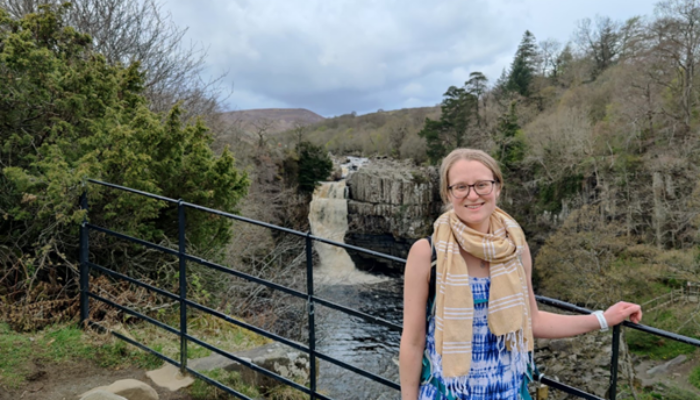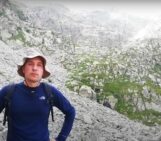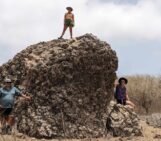
Recently, EGU announced the 2024 medals and awards to be presented at the General Assembly in April, and the winner of the Geomorphology Division Outstanding Early Career Scientist Award is Fiona Clubb, Assistant Professor in Earth Surface Processes at Durham University. Fiona is geomorphologist interested in interactions between tectonics, climate, and surface process shape Earth’s topography, and has made many contributions to the Geomorphology community, especially through developing open-source software for analyzing topographic data. Rachel Oien, Geomorphology Division Early Career Representative and Teaching Fellow at Durham University, sat down with Fiona to learn a bit more about her background and path.
How did you decide to go into geosciences and geomorphology?
I was interested in lots of different areas of geosciences when I was an undergraduate – but the thing that really got me into geomorphology was doing a course in my third year called “Eroding Landscapes” at Edinburgh. I always liked maths and equations, and I remember being fascinated by how we could derive a single equation that described the shape of landscapes, and how they would evolve through time.
What was your pathway into geosciences?
Honestly, I’m not even sure how I ended up in geosciences. At school, I originally wanted to do English literature or modern languages at university. But I also liked maths, and biology…I ended up going along to a few open days for Earth Sciences, and I liked the holistic nature of how it incorporates lots of other disciplines. I don’t think I ever had a defined plan or clear pathway though.
What do you think has led to your success in the field?
I have had really great mentors who went out of their way to help me get started in my career, particularly Simon Mudd and Mikael Attal from the University of Edinburgh. They helped me with papers, job applications, and wrote loads of references for me. I don’t think I would be where I am today without their help and support. I’m also part of a network of incredible women scientists in Geography at Durham – they have helped answer the many, many questions I’ve had while being new to my job here, with lots of lunches, coffee breaks, and general chats.
What questions are you interested in right now?
Right now, I’m really interested in what sets the shape of river valleys, how long sediment is stored there, and how extreme flood events can modify valley geometry. I’d like to explore how sediment transport in extreme floods is likely to be affected by the climate crisis – I think that geomorphology has a lot to contribute to the issue of climate change.
What part of your research do you find most exciting?
I’ve always found the most exciting part of research to be when I’ve got a big dataset, and I get to spend time messing around with it in various ways and making lots of figures!
What advice do you have to share with students and early career geomorphologists?
I think the advice I would give is that you should pursue what you’re interested in and passionate about (whether in academia or outside of it). You don’t need to be a Type A personality to do well. Try to work with people that you get on well with and that don’t take themselves too seriously. Collaboration is better than competition!




